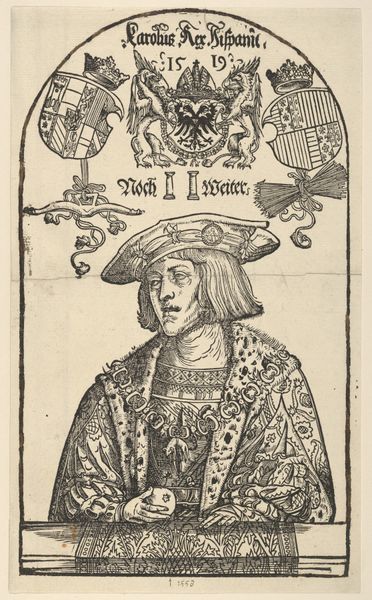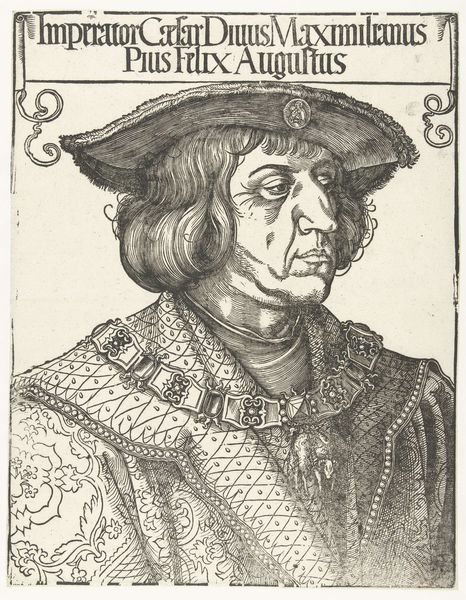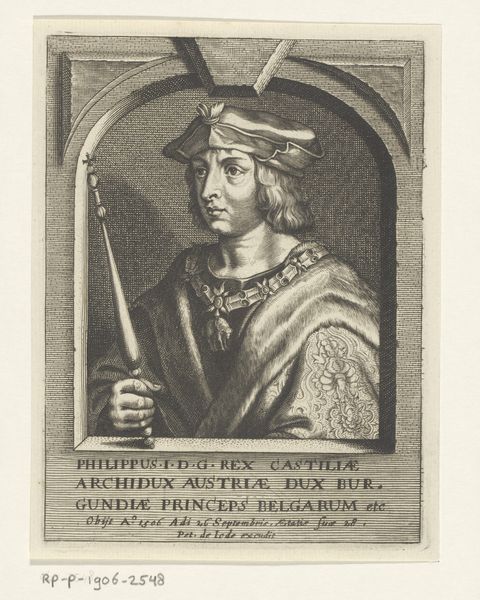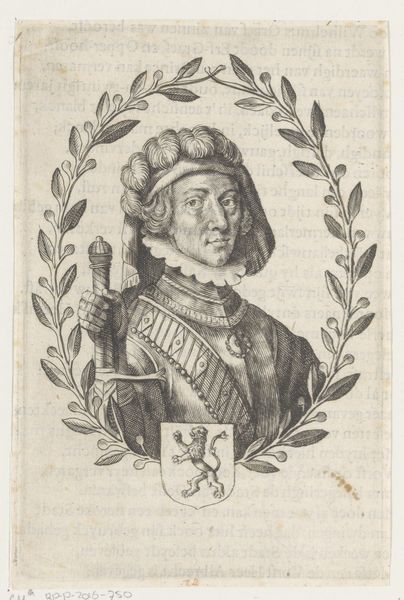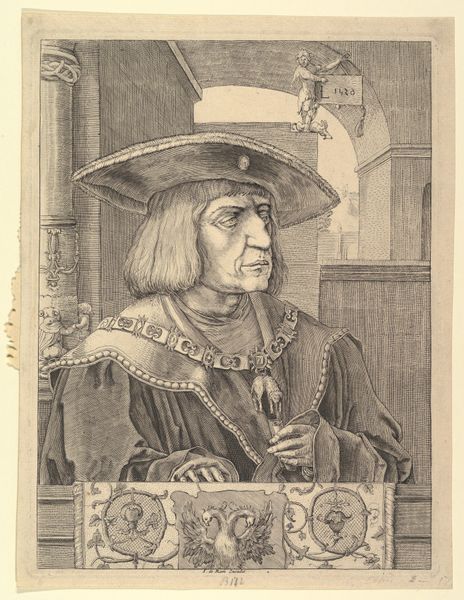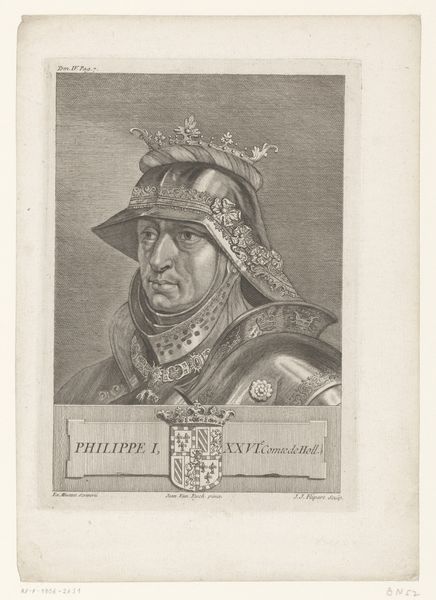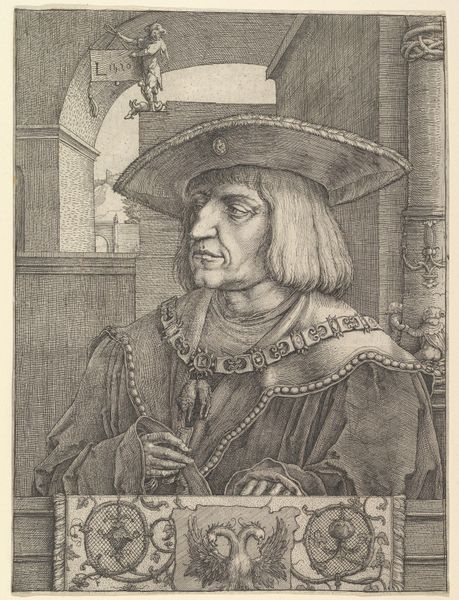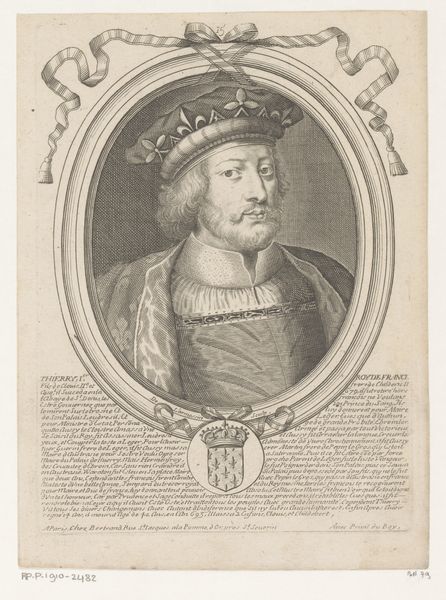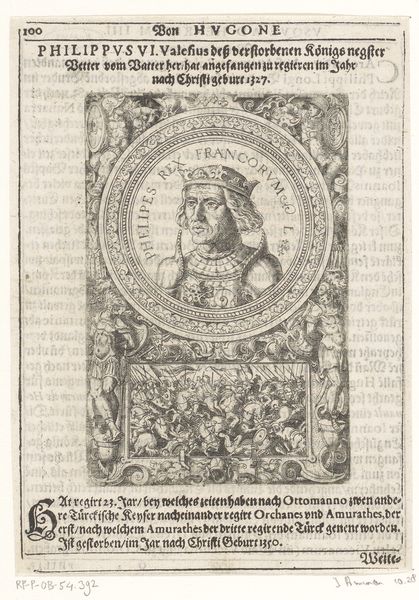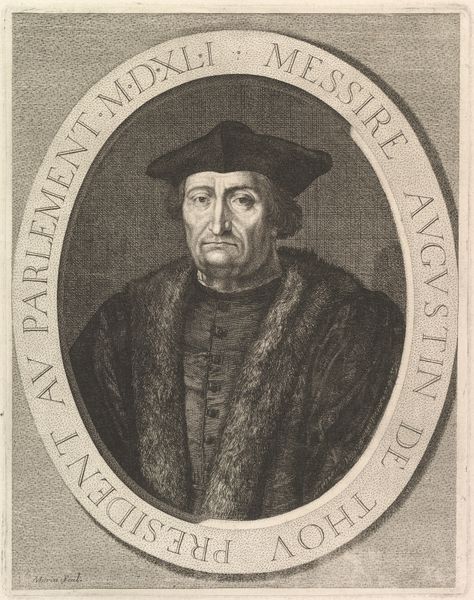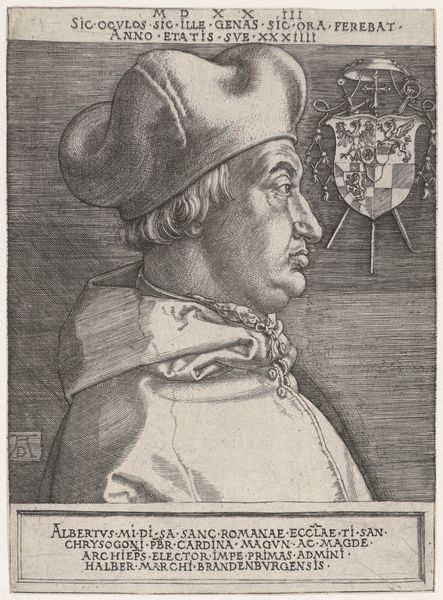
Portrait of the Emperor Maximilian I in an Architectural Frame (copy) 1480 - 1545
0:00
0:00
drawing, print, metal, engraving
#
portrait
#
drawing
# print
#
metal
#
figuration
#
geometric
#
men
#
history-painting
#
northern-renaissance
#
engraving
Dimensions: sheet: 22 7/8 x 16 1/16 in. (58.1 x 40.8 cm) plate: 21 1/4 x 14 13/16 in. (54 x 37.6 cm)
Copyright: Public Domain
Curator: This engraving, “Portrait of the Emperor Maximilian I in an Architectural Frame,” offers us a glimpse into the visual culture surrounding power in the Northern Renaissance. Though this is a copy, it still reflects the artistic milieu of 1480-1545, revealing how the Emperor wanted to be seen. Editor: It has a very formal and severe tone. All those heraldic beasts and elaborate architectural elements give it a weightiness; then Maximilian himself looks a little weary, despite all the symbols of authority surrounding him. Curator: Indeed. The frame, replete with classical columns and fierce griffins, evokes Roman imperial imagery, tying Maximilian to that legacy of power. Note the inscription above his head – "Imperator Caesar Maximilianus Augustus" – it's all very deliberately constructed to project a certain image. Editor: The eagle, prominently displayed above, feels like a shorthand for Holy Roman Empire—almost a brand logo of sorts. I'm curious about the function of these portraits—were they intended as propaganda, diplomatic gifts, or personal keepsakes? Or, were they meant to visually cement the power structures for those that could view them. Curator: All of the above, probably! Images like this played a vital role in disseminating the Emperor’s image and solidifying his authority across his vast and somewhat disparate territories. The symbols helped create a sense of shared identity and allegiance to the crown. Also consider how printed images circulated more broadly than paintings accessible only to an elite few. Editor: It's interesting to think of the print as a reproducible instrument of power—an early form of mass communication. It reminds us that images have always been deeply enmeshed with political and social realities. What endures with me, are not just the marks of authority, but an odd feeling that maybe this Emperor wanted us to know his mortality too. Curator: That’s a fascinating reading. Perhaps even subconsciously, these carefully constructed images sometimes reveal more than intended. Thank you for illuminating that for me!
Comments
No comments
Be the first to comment and join the conversation on the ultimate creative platform.

